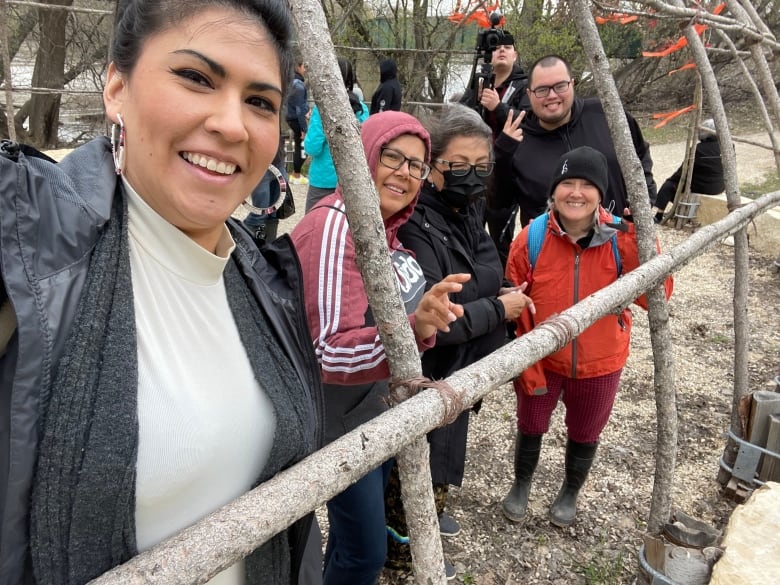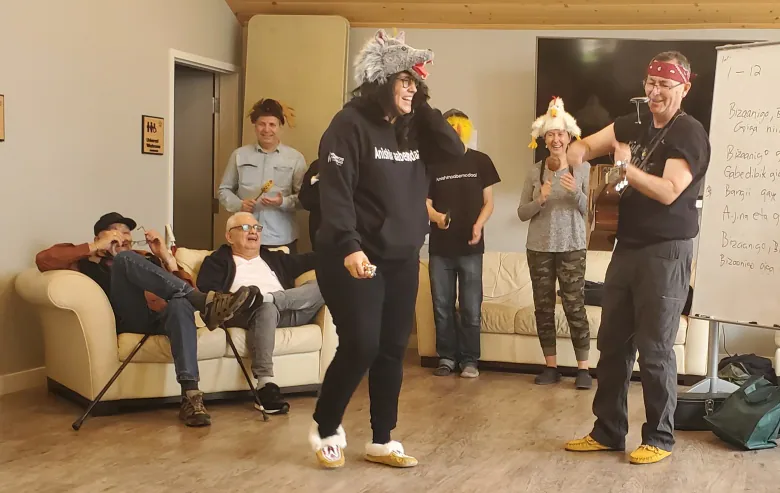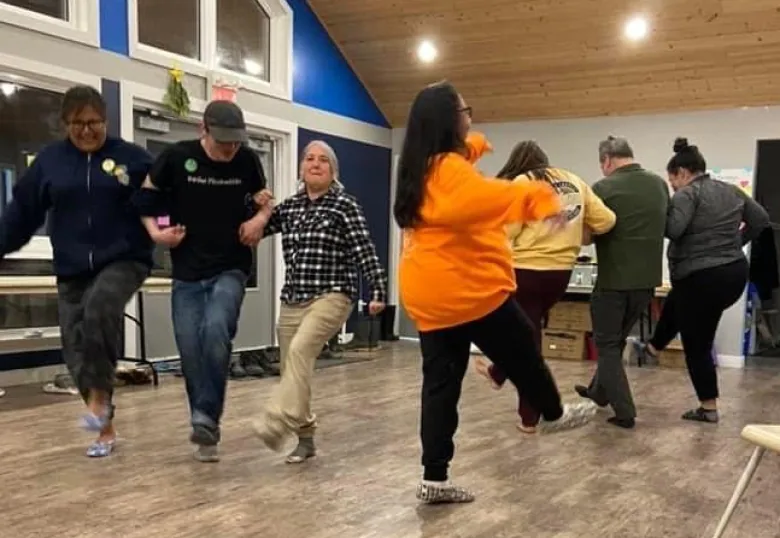When it comes to speaking the language of her Anishinaabe ancestors, Nova Courchene says she has the skills of a one-year-old.
The theatre instructor from Sakgeeng First Nation was one of nearly a dozen participants in a camp that immersed her in Anishinaabemowin for four weeks at Camp Manitou, just west of Winnipeg.
“It’s nerve-racking, but that was a pretty big experience for all of us at camp, to have to be put on the spot to speak our language in front of everybody,” she told Marcy Markusa, host of CBC Manitoba’s Information Radio, on Monday morning.
Courchene has limited skills with the language, but organizers were patient with her, she said.
“Just [pointing] out things, like a little one-year-old, and say, ‘Oh, that’s a makwa, that’s a benisi. That’s a bear, that’s a bird.'”
The camp, which lasted from May 1 to 28, was organized by the Manitoba Indigenous Cultural Education Centre.
Participants learned to use the language through speaking circles, songs and storytelling.

Dene Sinclair, a consultant from Winnipeg, said it was an emotional experience.
“It was challenging. It was beautiful. It was all those things put all together,” she said on Monday.
“Working together with the learners that were there and the teachers that were there, but then also whatever you’re overcoming yourself — it was a different experience for everybody.”
Sinclair has been working on her Anishinaabemowin skills in language groups over Zoom for two years, but the camp was the first opportunity she had to practice in person.
Part of the benefit of the camp was the removal of distractions that prevent people from using a new language.
“To just remove yourself from your everyday life, to go into this sort of little haven where we were just able to live and breathe and think Anishinaabemowin every day,” she said.
Over the past two decades, the share of the Indigenous population with the ability to speak an Indigenous language dropped, Statistics Canada says.
In 1996, 29 per cent of Indigenous people were able to speak an Indigenous language well enough to conduct a conversation.
In 2006, that had fallen to just over 22 per cent, and by 2016, it dropped to 16 per cent.
There are many reasons, including the government of Canada’s residential school policy, which stripped Indigenous Peoples of their languages by separating children from their families. Indigenous languages were forbidden at the schools, and children often faced harsh punishment for speaking their home language.
Around 28,000 people speak Anishinaabemowin, mostly in Ontario, Quebec and Manitoba.

In recent years, there has been an attempt to increase the number of speakers through the release of children’s books, apps and immersion programs.
In the past, children would learn to speak the language by listening to their family and community members, Courchene said. She recalls hearing her grandmother speak growing up.
By the end of the three-week camp, she began to understand the patterns of the language and how to conjugate sentences.
“It’s a pretty complex language,” she said.
Sinclair hopes to continue practicing Anishinaabemowin so she can pass it on to others.
“I try to speak Anishinaabemowin every day at some point, and so sharing with other learners and learning together with other people, that’s really, really vital to my language journey,” she said.
Organizers plan to hold another camp, but a date hasn’t been set.

Reference-www.cbc.ca